
32nd Sradhanjali Samaroha in remembrance of Guru Debaprasad Das
- Nita Vidyarthi
e-mail: nitavidyarthi@gmail.com
Photos courtesy: Tridhara
August 13, 2018
In remembrance of Guru Debaprasad Das, Tridhara, Bhubaneswar,
organizes 'Sradhanjali Samaroha', a day-long festival of
Odissi dance every year on 16th July, the death anniversary of the
maestro. The main force behind this marathon festival is Tridhara's
director, Guru Gajendra Panda, the maestro's foremost disciple and the
torch bearer of his legacy.
Three generations of gurus and teachers and their respective students
belonging to the Debaprasad Gharana participate to pay homage to the
great guru through dance. This year, forty eight groups and 550 dancers,
including beginners from different parts of the country participated in
the back-to-back performances from 10am to 10pm. The audience at
Rabindra Mandap in this 32nd year had the privilege of watching the
performance of Debaprasad Das' first student, the acclaimed 84 year old
Guru Sudhakar Sahoo under whom a large number of the present day
renowned gurus have been
trained.
The ritualistic procession from Utkal Sangeet Mahavidyalaya, after
pushpanjali and garlanding of the guru's statue there had to be called
off because of the rains. Instead, everyone including the dignitaries,
walked in procession from the altar of Lord Jagannath inside Rabindra
Mandap with the sounds of conch shells and beating of drums, to garland
and offer pushpanjali to the guru's photograph placed at the front
corner of the stage. Most people missed the presence of the Ranapa
(stilts) dancers.
The vibrant performance by the folk artists of Narendrapur,
"Shankhamuhiri" with drums, muhuri (a wind instrument) and double conch
shells ushered in the performances. It commenced very aptly with the awe
inspiring exposition of "Mahakali Dhyan" in raga Darbari, taal ektali
by Guru Debaprasad Das' granddaughter Bagmishree Das. The vivid dancing
was interspersed with the guru's signature Sabdaswara patha in tala
joti.
Every performance of Tridhara begins with the invocation "Vishnu
Bandana" followed by "Panchadeva Namosthutey." The junior dancers of
Tridhara initiated the performances by the participating groups by
paying obeisance to Ganey (Ganesh), Narayan, Rudra, Ambika and Bhaskar
through a beautifully choreographed presentation, indicative of good
training. Prashannakshee (Brahmapur) presented one of Debaprasad Das'
valuable compositions, 'Kalavati Pallavi' followed by Odissi Sadhana
Pitha's pleasing raga Kedar based 'Saraswati Bandana'in Talamalika,
choreographed by Guru Durga Charan Ranbir. Little girls of Nrutya Nipuna
entertained with "Gananayaka." Interestingly both Ganesh and Shiva were
dressed alike. "Naba Durga" by a male and female dancer of Satabdi
Nrutyayana, Kolkata, was a well-coordinated, appealing duet by two
skilful dancers. The original composition by Durga Charan Ranbir was
choreography for the performance by Satabdi Mallik. The line "Jaya
Bhagawati Devi namoh varadey" had a different composition every time it
was repeated.
Slide show
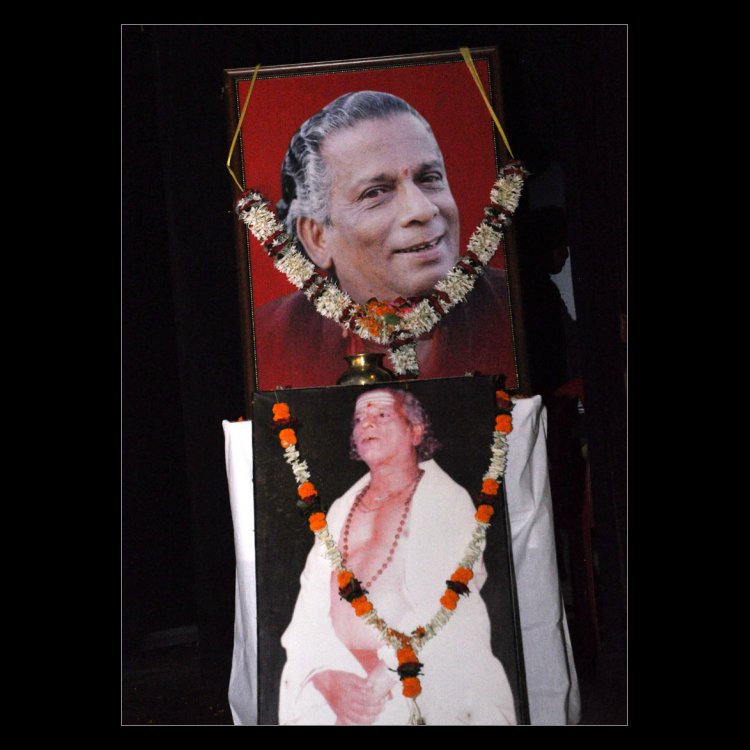
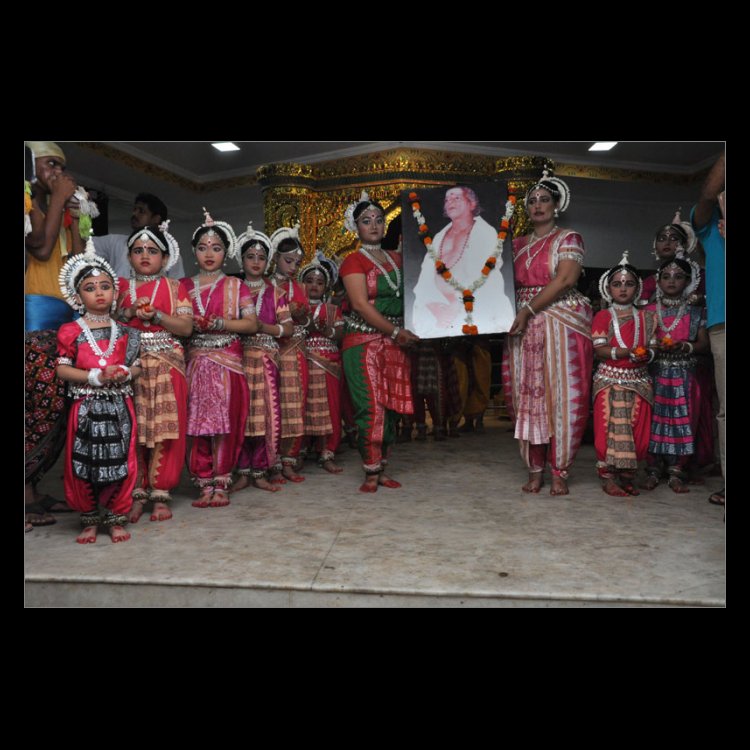
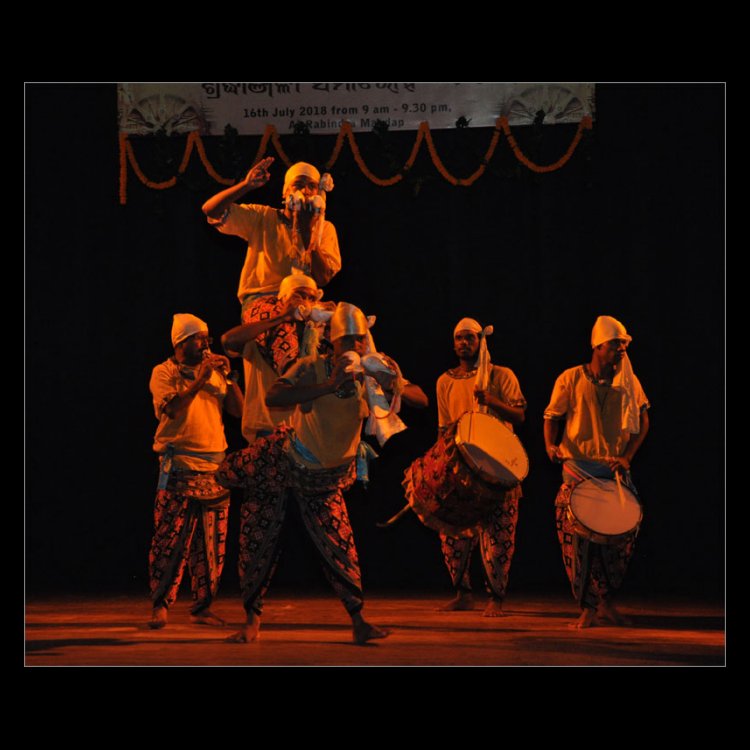
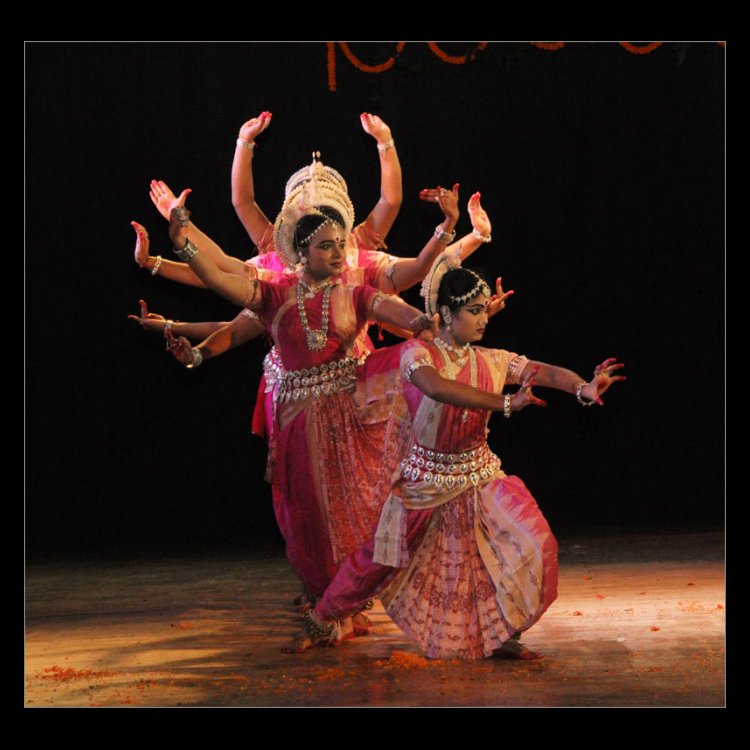
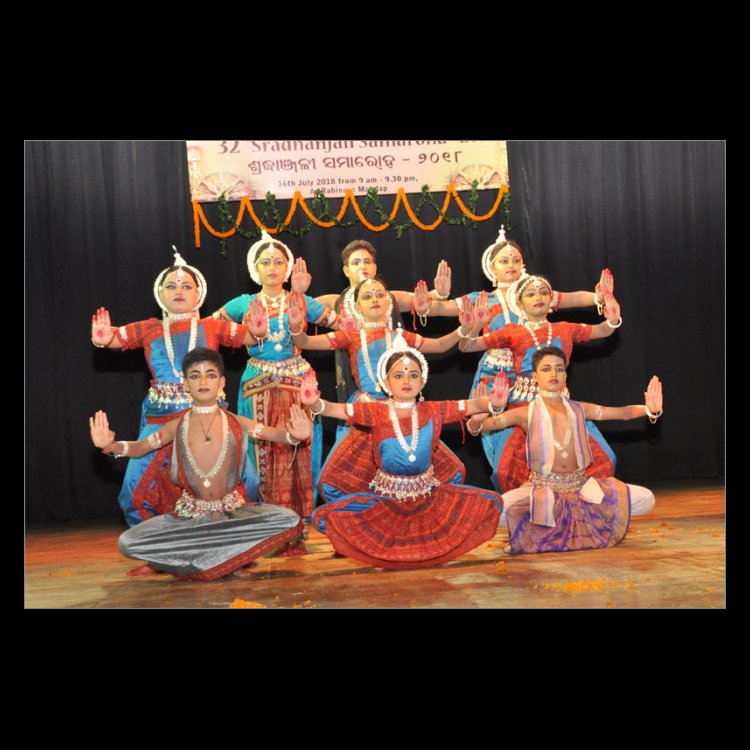
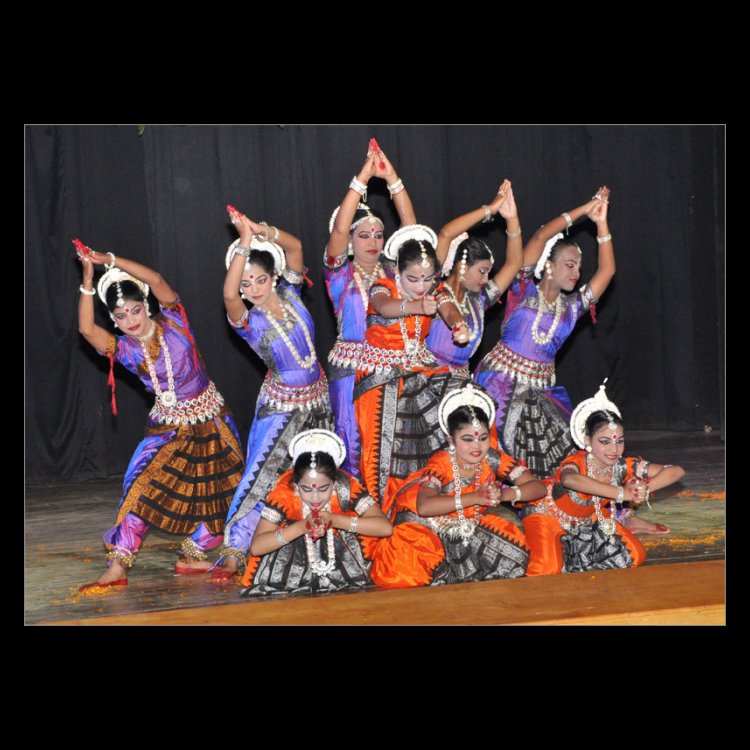
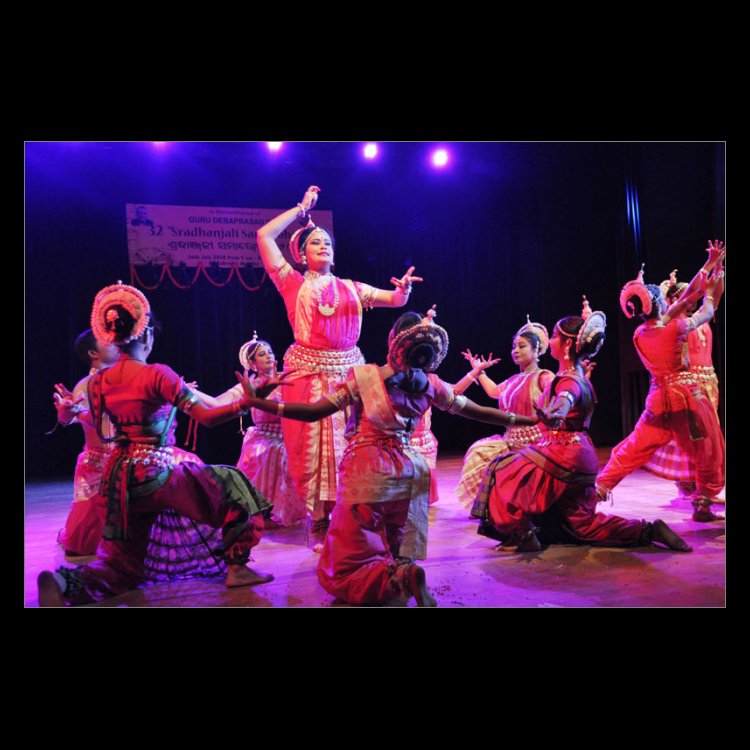
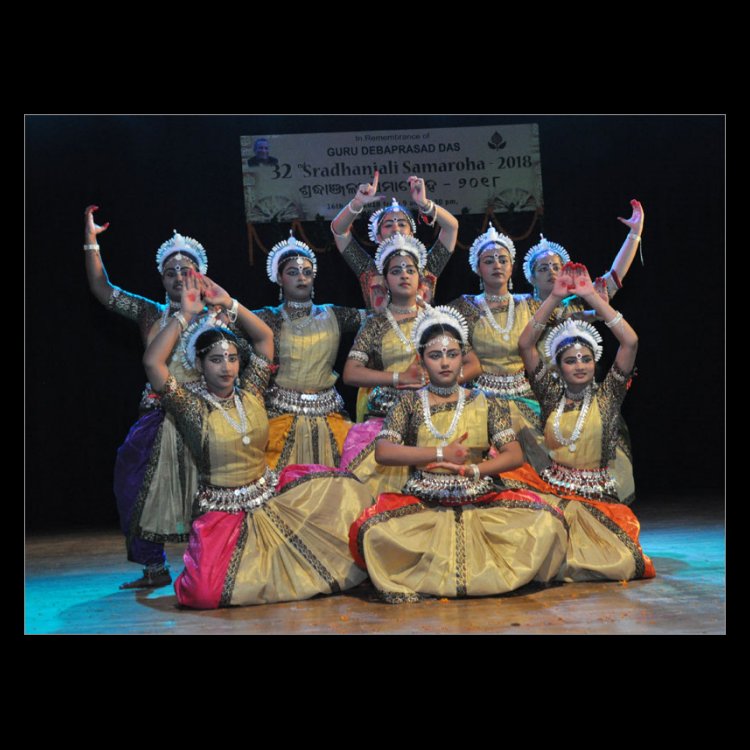
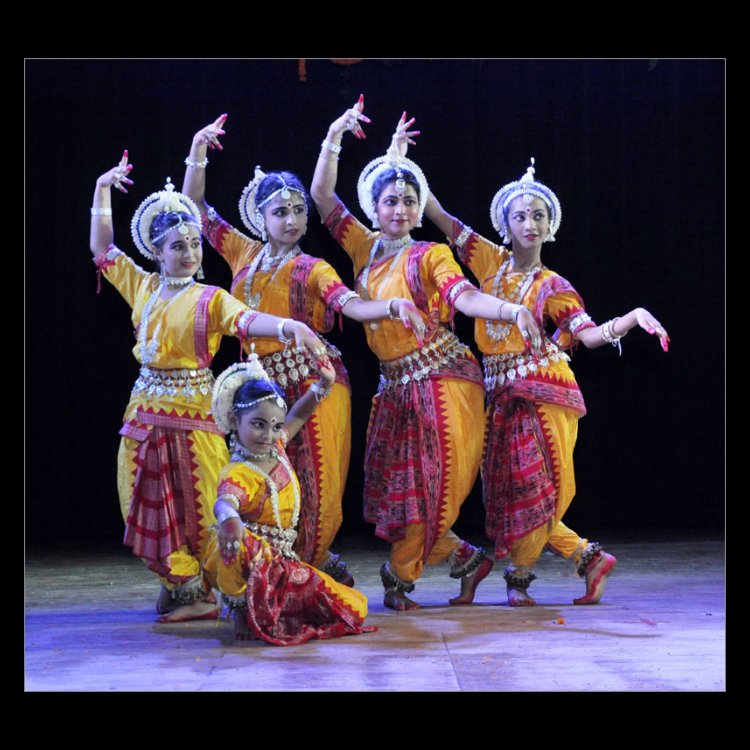
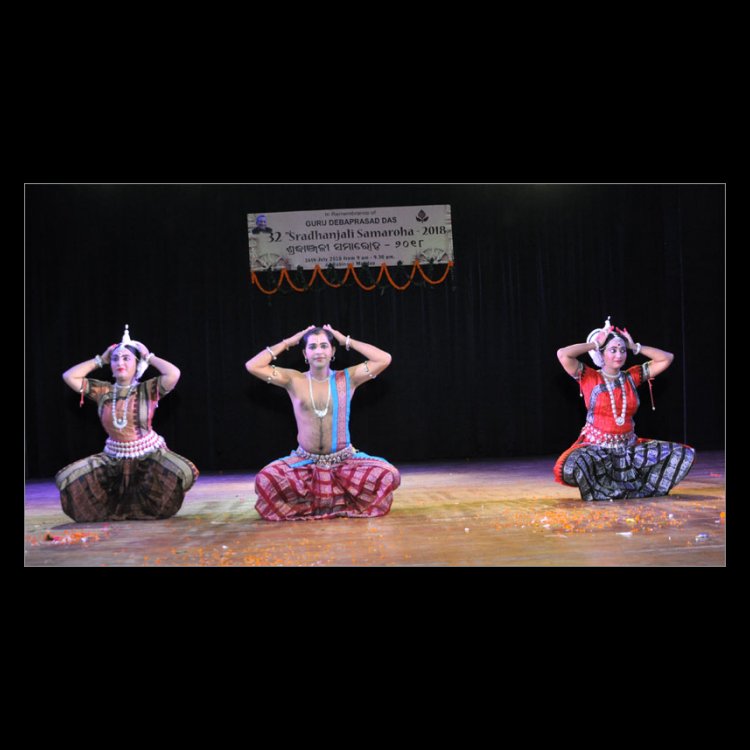
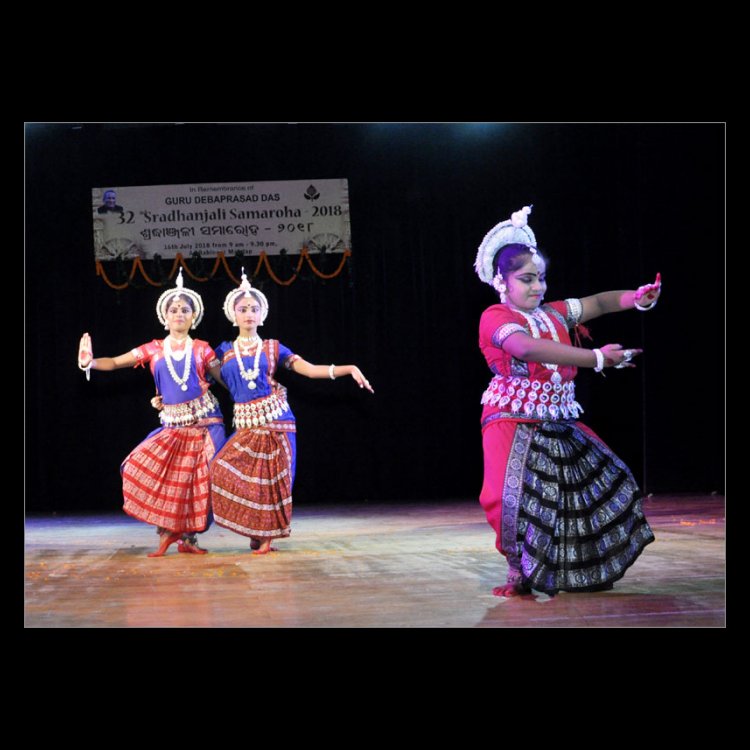
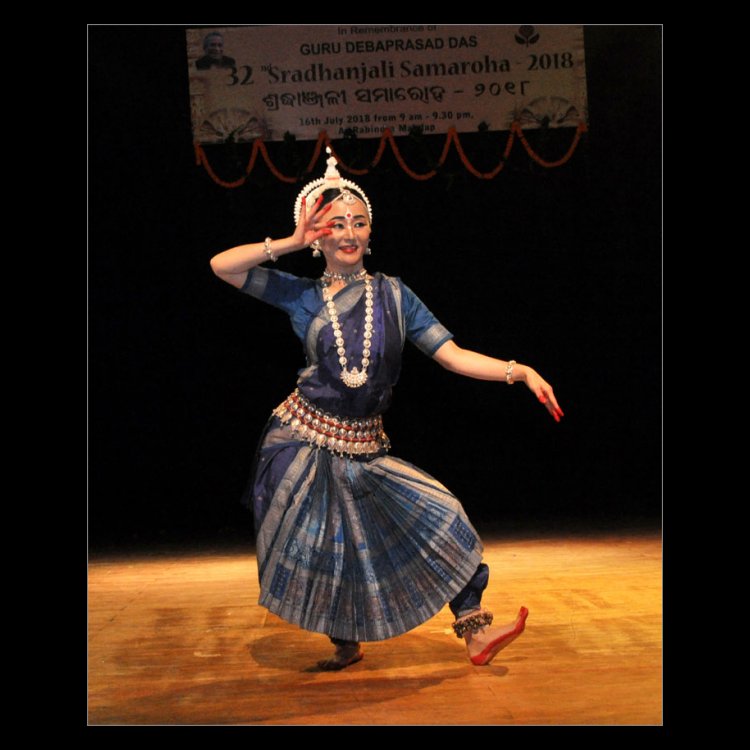
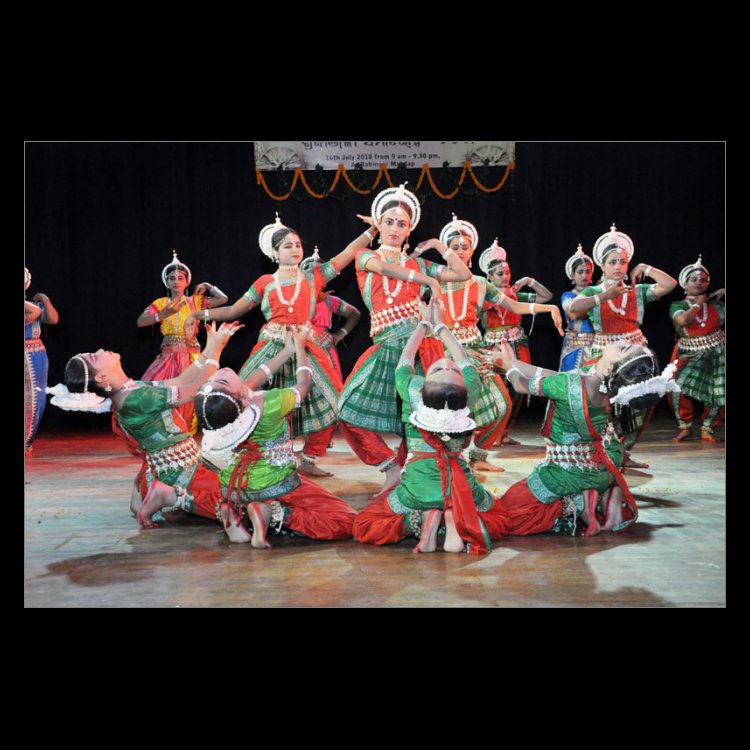
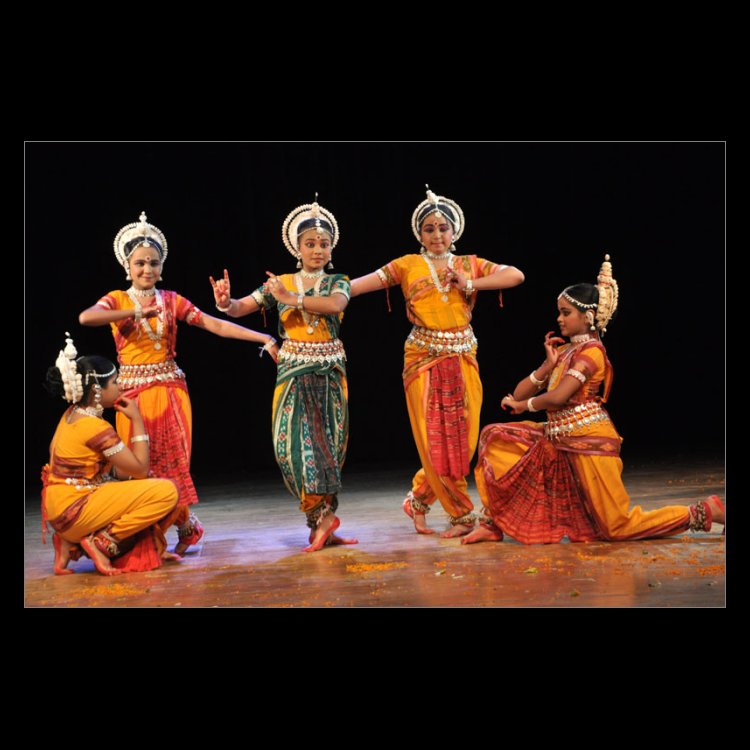
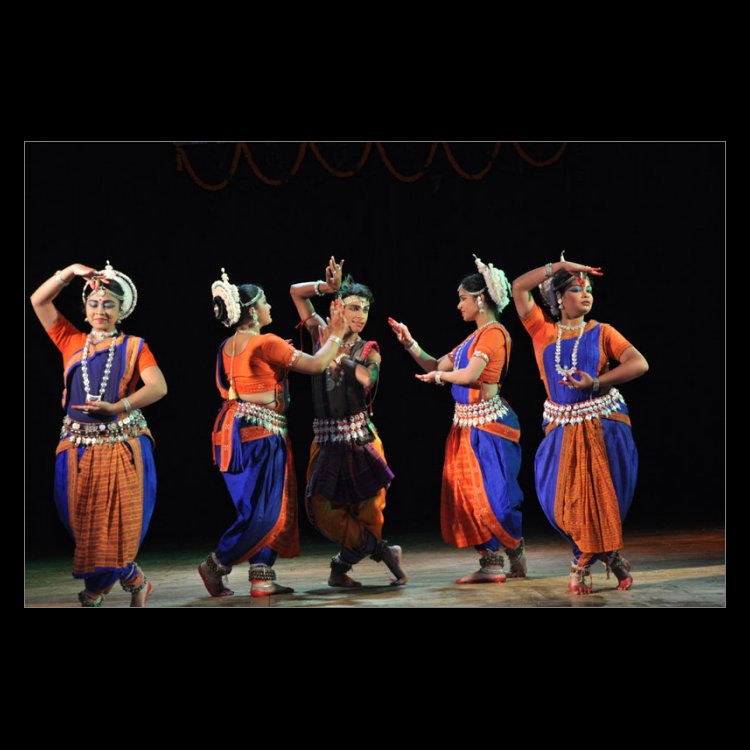
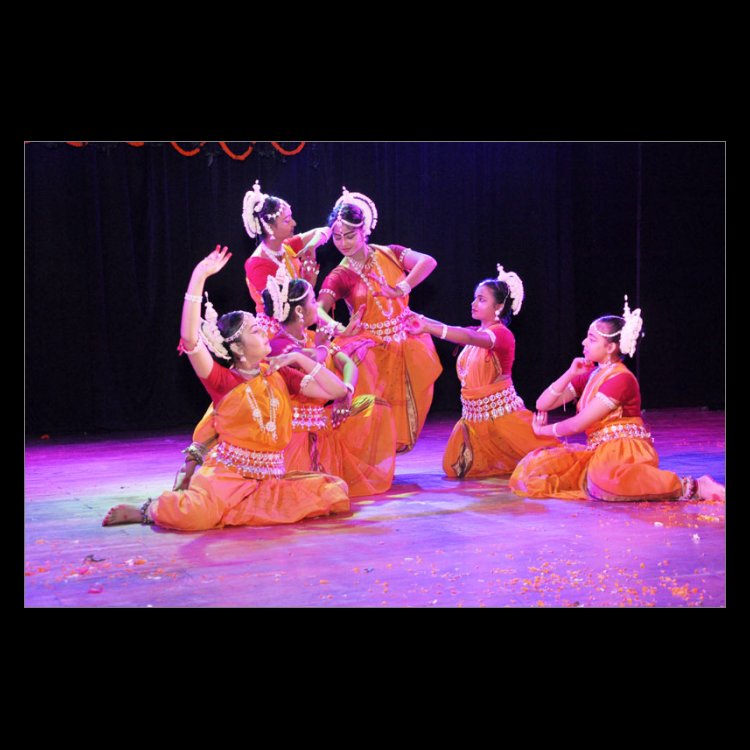
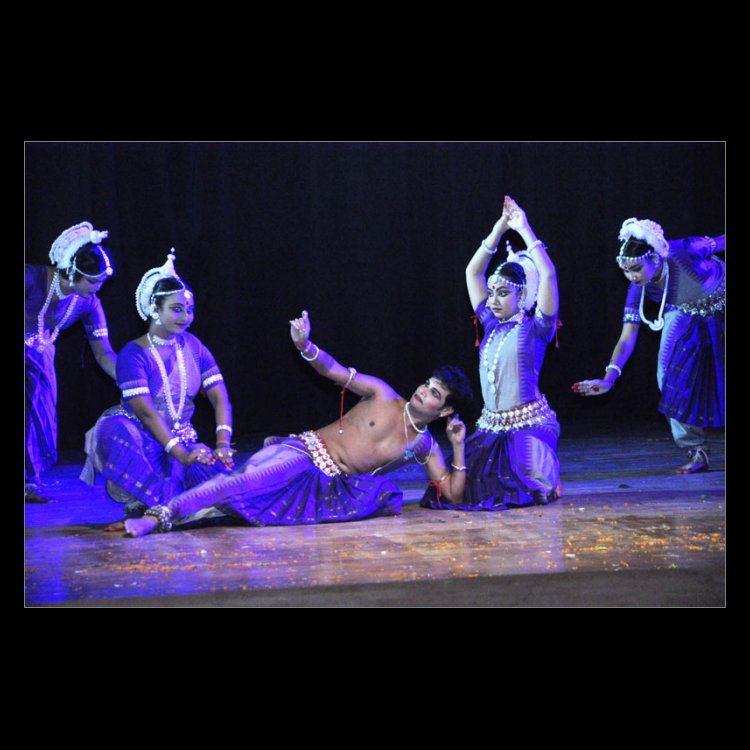
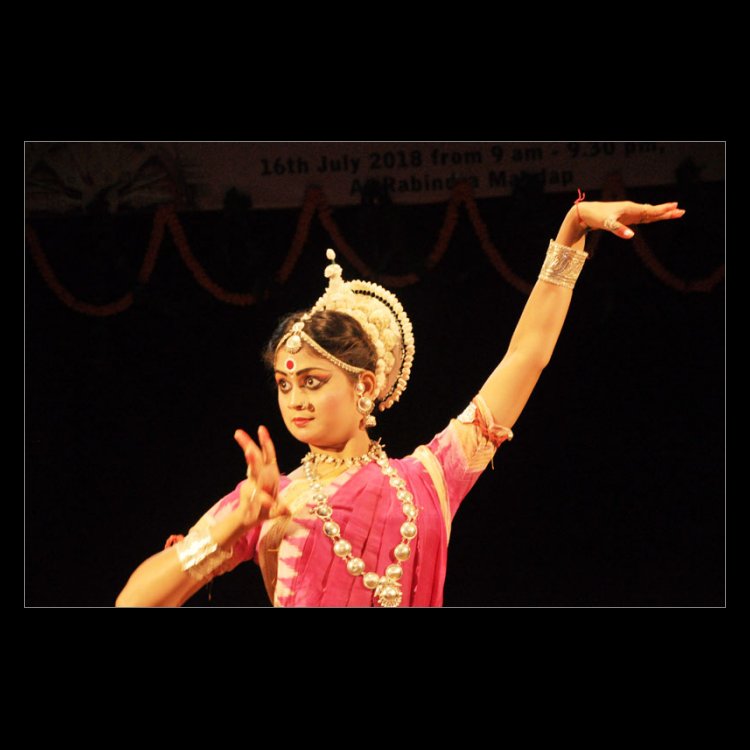
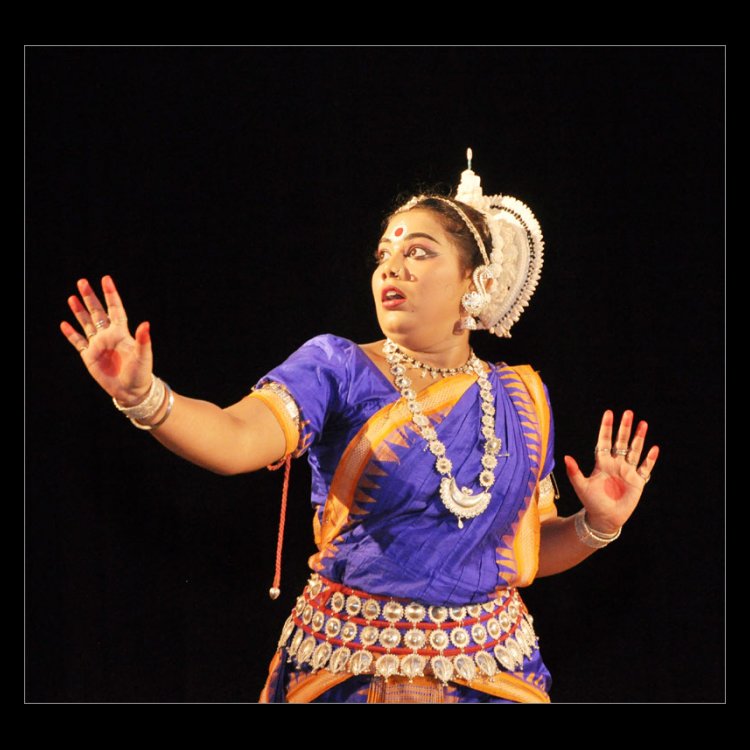
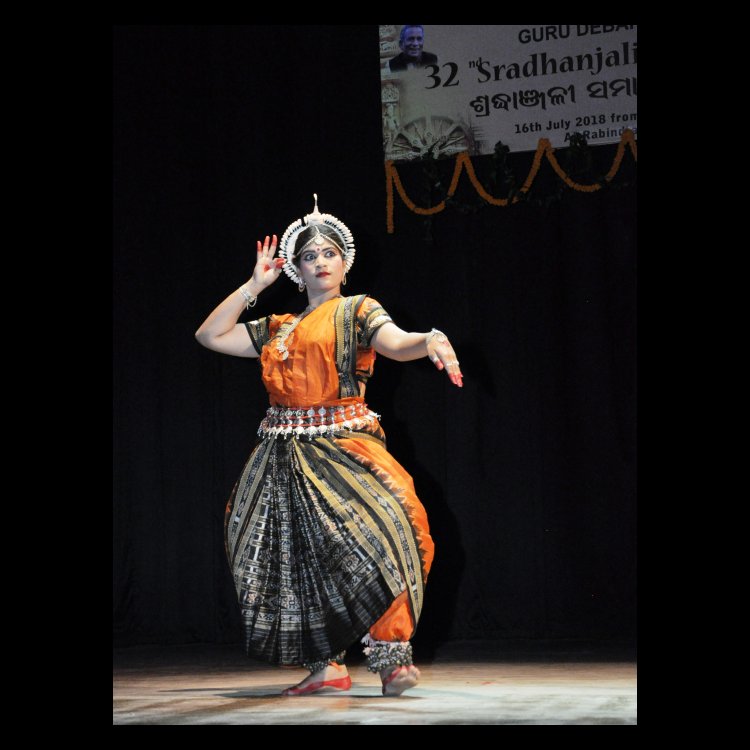
The encouraging feature this year was the variety of themes, efficient
and larger participation by juniors, healthy representation and lesser
overlaps of themes. Incidentally, the festival is a tribute to the great
guru and not a competition or display of quality, variety or
efficiency. Nevertheless, there were only a couple of Ganga Taranga,
Kasturi Tilakam, Kalavati Pallavi and Ganesh Vandana this year! It was a
delight to watch several uncommon Odia abhinaya numbers even by
juniors. In general there was a noticeable progress in the standards of
young dancers as compared to previous years. Undoubtedly this is an
indication of the increasing effort in learning and popularity of the
guru's strong and vibrant style, thanks to the untiring efforts of
senior gurus like Durga Charan Ranbir, Gajendra Panda and others.
Kavi Banamali's "Kielo sajani kedi kadambamuley" by Nritya Tirtha
Academy which ended in a well-knit fast paced nritta deserves praise. Om
Kalinga Kala Parishad's touching "Tanku chahanalo mito" touched
people's heart primarily because Guru Debaprasad Das used to dance to
this song. The lovely abhinaya "Mitachahoni para" by Bhubaneswar Kala
Kendra was enjoyable, so was "Rase harimiha" by Om Art Dance Academy of
Ahmedabad. GSPA, Bhubaneswar presented a well rehearsed Shiva Tandava.
Cuttack Kala Vikas Kendra has gradually grown with a strong set of
dancers as was evident in the Durga Stuti, "Manini Palini Danini hey" in
raga Patdeep, tala joti and triputa. Among other groups, "Bhadrakali
Strotra" by Surabhi was evocative. Sudipta Panda's group Sanskruti Kala
Niketan from Hyderabad gave a good account of themselves in "Vishnu
Vandana" and Mokshya. What jarred was the lengthy introduction and
achievements of Guru Sudipta Panda that was read out by her student
before the performance. The ashtapadi "Chandana charchita" by the
dancers of RAWA Academy of Adruta Dance Troupe was highly gratifying.
In the solo numbers, senior dancers displayed maturity and technical
competence. Diptimayee Sahu of Debaprasad Kala Tirtha, etched out each
of the Navarasas vividly while Namita Roy's "Achombitey dekhili go mito"
was profusely romantic. Sangeeta of Jatani gave a spiritual imagery of
the Jagannath bhajan "Chakanayanku patita kehi." Arya Nande from
Sarangarh is a promising dancer with a stately stage presence. Her
chiselled movements in "Ashta Shambho" was a delight to watch and
displayed her understanding and technical skill. Guru Susanta Kumar Das
of National Cultural Kala Pratishthan, Jasuapur, Cuttack, presented
Durga Staba (Sarvamangala mangalye) as Mokshya even though this item is
generally the final one in an Odissi repertoire. Kaori Naka from
Debadhara Japan, trained under Guru Gajendra Panda has emerged as a
competent dancer and stunned the audience with her energetic Shiva
Ashtakam.
Guru Sudhakar Sahoo
Amidst loud applause entered the veteran Guru Sudhakar Sahoo, clad in an
orange dhoti to present an impassionate romantic abhinaya "A ghoro
Barashakaley Priyarasa rasa adhorey" on monsoon, in raga Chokhi, written
by Upendra Bhanja. In an impassionate rendition, he in the Nataraja
pose kissed his one hand, let loose in grace the other, as if it is the
hand of Parvati , portraying "rasa adhorey" (caress). This sensitivity
and imagery is only possible for an artiste of a very high calibre. Age
has taken its toll and his movements are not as crisp but the facial
expression remained soaked in emotion to mesmerize the audience. Deepak
Parida on the mardala and Sukanta Kundu's soulful singing said it all. A
true homage indeed to the revered guru. The program was conducted
patiently and with uniform energy by none other than Srinibas Ghatuary
(Milan) throughout from the beginning till the
end.
Dr. Nita Vidyarthi is a veteran critic of performing arts and writes on dance, music and theatre in leading publications.
|





